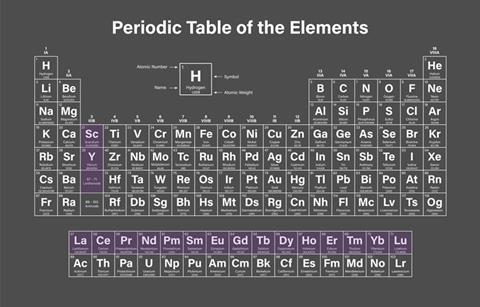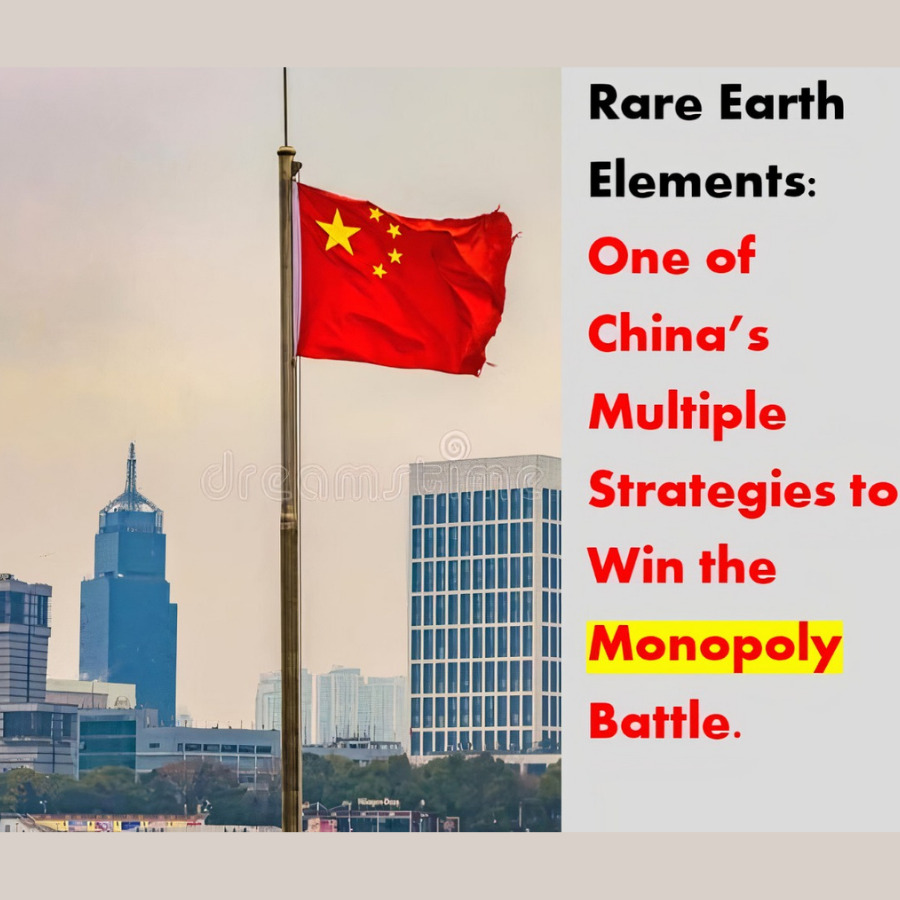We are in the midst of changing world order, but this change is not being induced by bullets and weapons; A tiny yet horrifying virus can be much more lethal and at this point, we have a clear picture of it. As though, this article is not about the virus from Wuhan, it is about a battle that has been brewing below the radar: The Battle for Secret ingredient that will power our future. Call it new gold, new oil or new strategic fuel, it’s about the rare earth elements.
[the_ad id=”7507″]
What are Rare Earth Elements? How do We Describe Them?
Movie directors would describe them as all-powerful elements, metals, perhaps, with all the supernatural characteristics like Mithril from the Movie Lords of The Rings, light as a feather and hard as diamond but supremely found in the mines of Moria.
Unobtainium, a metal that sells for $ 20 million a Kilo from the well-known movie AVATAR, a precious metal found on the distant planet, Pandora.
Imagine yourself living in Wakanda, home to a panther, how would you describe ‘Vibranium’? The movie has engaged its audience by portraying a rare earth element named Vibranium which can absorb any kind of kinetic energy.
The world outside the movies has a different story of the rare eath elements. We live on planet Earth with a virus on the prowl and there are as such no supernatural elements. Rare Earth Elements Do Not possess supernatural characteristics but they already rule our lives. Everything that we surround ourselves with, has got rare earths in variable amounts, from smartphones to supersonic jets rare earths are the secret ingredient of almost every scientific wonder. One country that has already been into multiple controversies is sitting on a pile of such metals.

Do you remember the periodic table, known for not being friendly with most students unless they have special interests in chemistry. Taking a glance at the periodic table, we observe a couple of rows that appear to have been kicked out of the table and seemingly do not fit in and sit ignored. A set of 15 elements of these are called Lanthanides, the chemical elements tucked into the sixth row of the Periodic table. Lanthanides along with Scandium and Yttrium you get what the world knows as the Rare Earth Elements, well, why are they rare and at the same time so precious?
It’s because they don’t appear in big deposits or big mines like other elements do. They are much more evenly spread across the planet which makes mining refining difficult. Despite their abundance, rare earth elements are quite rare to find. One country has roughly 1/3rd of the World’s deposits of the rare earth elements, nearly 36% of the global reserves and as of today, it accounts for 90% of the global production of these elements. China is the country where the rare earth elements are concentrated in a handful of mines in three regions of China: Mines in the province of Inner Mongolia, Southern provinces of Hunan, Jiangxi, Fujian and others and also the central province of Sichuan. These areas account for 98% of China’s total production of rare earth elements. What does China do with them?
[the_ad id=”7507″]
It manufactures a range of devices, here is a rough idea, devices that need rare earths: Air crafts, missile guidance tools, wind turbines and magnets, batteries and Electric vehicles, Plasma screens, LCDs, LED bulbs, Camera, speakers and even fertilizers, they all need rare earths which are the secret ingredient of every scientific miracle and virtually every Chinese product.
China today is the king of rare earth elements.
“The middle east has oil, China has Rare Earths” – Deng Xiaoping

Deng Xiaoping is the former paramount leader and said it in a speech way back in 1992. Current Paramount and the president for life, the one and only Xi Jinping is hoarding these elements. Rare Earth Elements have become a secret weapon, moreover it’s a trump card in the trade war with the United States. More than 80% of these precious metals used by the United States are imported from China. The Chinese Communist Party (CCP) has hinted that it will restrict the exports to America if the administration continues to impose sanctions. It’s quite a threat! The Chinese regime is using these rare Earth Elements as a Political Weapon, a bargaining chip.

We have other options too!
There are other countries with large amounts of Rare Earths deposits, if extracted they can feed the need of American and European markets and end China’s monopoly. Which are these countries?
Canada, Australia, Brazil, Vietnam and India. Now here’s the disclosure, India was one of the first countries to recognise the significance of these minerals. Head back to 1950s, India established what is known today as the Indian Rare Earths Limited, a state-owned corporation based in Mumbai. India had a prime mover’s advantage but it lies hidden under the not so rare Indian Red Tape.
[the_ad id=”7507″]
Where does India Stand?
India’s Rare Earth Elements industry lies wasted and underused, the minerals lie buried in Indian soil. India has the fifth-largest reserves of these minerals if some estimates are to be believed. These deposits are reportedly spread over Eastern and all Northeastern states of India. According to one estimate, the domestic supply chain of Rare earth elements in India if revived could potentially be worth rupees 90000 crores in annual turn over, which’s close to $12 billion and it can generate net capital employment of about rupees 121,000 crores or $16 Billion. As far as foreign exchange is concerned, the Rare Earths industry has the potential of generating Rupees 50,0000 Crores for India, more than $ 6 Billion.
The scope for the Rare Earth industry in India is immense, New Delhi must come up with a national strategy to revive it to its full potential, the broken link between industry bigwigs and researchers must be re-established. This revival will give both economic and strategic benefits. It can do wonders for the Governments Make in India plan.
This Pademic has taught the whole world the significance of self-reliance, Aatma-Nirbharta as PM Modi mentions it.
The rare earths industry could be the India’s chance to achieve self-reliance, A chance to demolish China’s monopoly.




[…] and investigated correctly due to a lack of concern from the health officials and the “Pro-China Bias” of the American […]